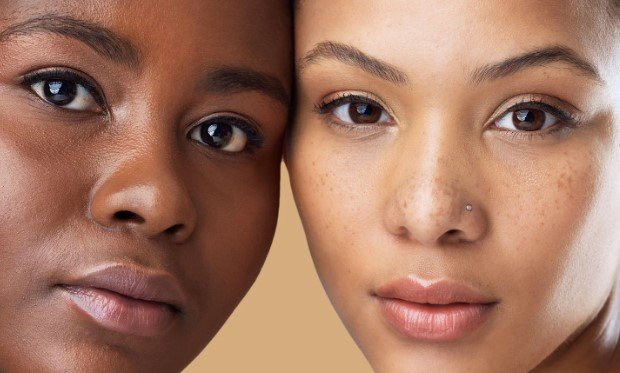Benefits of Using Clay Masks: Deep Cleansing, Oil Control, Acne Treatment, Exfoliation, Relaxation and Self-Care
Summary
- Clay masks help to deeply cleanse the skin and remove impurities.
- They can help to control oiliness and acne breakouts.
- Using a clay mask can also promote relaxation and self-care.
Introduction
Skincare is an important aspect of self-care and overall well-being. Taking care of our skin not only helps to improve our physical appearance but also boosts our confidence and self-esteem. One popular skincare product that has gained popularity in recent years is the clay mask. In this article, we will explore the benefits of using Clay masks in a daily skincare routine for self-care.
Benefits of Using Clay masks
Deep Cleansing
One of the main benefits of using a clay mask is its ability to deeply cleanse the skin. Clay masks are known for their detoxifying properties, as they help to draw out impurities and toxins from the skin. The clay acts like a magnet, attracting dirt, oil, and other build-up on the skin's surface. This deep cleansing action helps to unclog pores and prevent breakouts, leaving the skin looking fresh and revitalized.
Oil Control
Clay masks are also beneficial for controlling oiliness in the skin. Excess oil production can lead to acne breakouts and a shiny complexion. By using a clay mask regularly, you can help to absorb excess oil and sebum, thus reducing the likelihood of breakouts and keeping your skin looking matte and smooth.
Acne Treatment
For those who struggle with acne-prone skin, Clay masks can be a game-changer. The antibacterial and anti-inflammatory properties of certain types of clay, such as kaolin and bentonite, can help to reduce acne breakouts and calm redness and irritation. Regular use of a clay mask can help to improve the overall appearance of acne-prone skin and promote a clearer complexion.
Exfoliation
In addition to its cleansing and oil-controlling properties, Clay masks also provide gentle exfoliation. The texture of the clay helps to slough off dead skin cells, revealing a smoother and brighter complexion underneath. Exfoliating the skin regularly can help to improve skin texture, reduce the appearance of fine lines and wrinkles, and promote cell turnover for healthy, glowing skin.
Relaxation and Self-Care
Beyond the physical benefits, using a clay mask can also have a positive impact on your mental well-being. Taking the time to pamper yourself with a skincare treatment can be a form of self-care and relaxation. The act of applying a clay mask and allowing it to dry on your skin can be a calming and meditative experience, helping you to unwind and de-stress after a long day. By incorporating a clay mask into your daily skincare routine, you can prioritize self-care and make time for yourself amidst the hustle and bustle of daily life.
How to Use a Clay Mask
- Cleanse your face with a gentle cleanser to remove any dirt, oil, or makeup.
- Apply a generous layer of the clay mask to your skin, avoiding the delicate eye area.
- Allow the mask to dry for 10-15 minutes, or as directed on the product packaging.
- Rinse the mask off with lukewarm water, gently massaging in a circular motion to exfoliate the skin.
- Follow up with your favorite moisturizer to hydrate and nourish the skin.
Conclusion
In conclusion, incorporating a clay mask into your daily skincare routine can offer a wide range of benefits for both your skin and your well-being. From deep cleansing and oil control to acne treatment and gentle exfoliation, Clay masks can help to improve the overall health and appearance of your skin. Furthermore, the act of using a clay mask can promote relaxation and self-care, allowing you to prioritize your own well-being and mental health. So why not treat yourself to a clay mask today and experience the transformative effects for yourself?

Disclaimer: The content provided on this blog is for informational purposes only, reflecting the personal opinions and insights of the author(s) on the topics. The information provided should not be used for diagnosing or treating a health problem or disease, and those seeking personal medical advice should consult with a licensed physician. Always seek the advice of your doctor or other qualified health provider regarding a medical condition. Never disregard professional medical advice or delay in seeking it because of something you have read on this website. If you think you may have a medical emergency, call 911 or go to the nearest emergency room immediately. No physician-patient relationship is created by this web site or its use. No contributors to this web site make any representations, express or implied, with respect to the information provided herein or to its use. While we strive to share accurate and up-to-date information, we cannot guarantee the completeness, reliability, or accuracy of the content. The blog may also include links to external websites and resources for the convenience of our readers. Please note that linking to other sites does not imply endorsement of their content, practices, or services by us. Readers should use their discretion and judgment while exploring any external links and resources mentioned on this blog. Content in this blog is copyright protected, please do not repost or embed content without prior written permission.